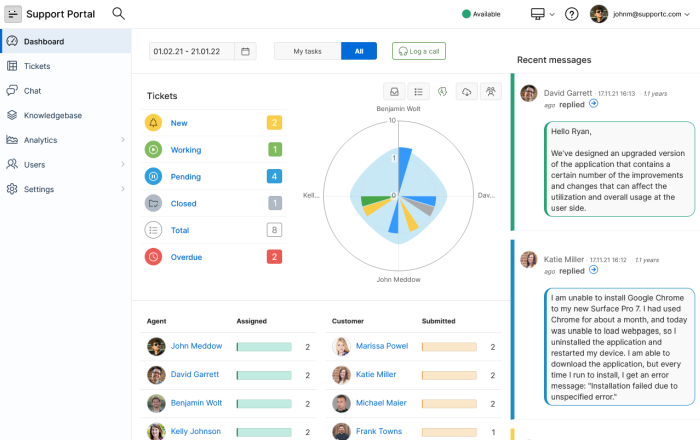One of the most common frustrations of customers and IT helpdesk representatives is when a customer request has to get resolved outside of the helpdesk. A typical scenario is as follows:
- The customer calls regularly to check on the request status
- The help desk contacts support agent assigned to the request
- The customer is frustrated because the delay will affect his work
- The support agent is frustrated because there are so many support and operational tasks already assigned to him.
The final result is the helpdesk caught between customers and IT support agents. This is one of the crucial problems helpdesk managers need to solve before customer satisfaction falls below the desired level.
A successful IT helpdesk focuses on essential practices and fundamentals to raise helpdesk performance. Although you can find diverse definitions and opinions, only a few principles are driven by customer satisfaction. The following is the description of top helpdesk practices for IT helpdesk.
- Enable self-service capabilities
Allow customers to make decisions about their needs and provide them with a way to communicate those needs to the support department and dedicated staff. Customers allowed direct communication with help desk team members are more satisfied with your products and services.
- Real-time handling of support requests
Spend time each week looking at call volume and email workload on a day and hourly basis. You will find trends for each day of the week and each hour of the day that helps guide your workload scheduling.
- First call resolution
Few things will satisfy your customers more than resolving their support request when they call, or within a short time of their email. Your efforts to improve first-call resolution will help them get on with their day and improve your interactions with them.
- Open case follow-up
Work constantly on closing open issues that were not resolved on the first call. Set expectations that each support agent should update each case with status information periodically. Set the service level agreement with your customers and hold your support teams accountable.
- Support tasks prioritization
Implementing processes and tools that prioritize support tasks will benefit support staff, managers, as well as customers. The essential tool is a report in a form of a ticket list that the helpdesk publishes and distributes to support teams. There also should be a set of additional data describing a support request needed to properly track requests:
- Ticket assignment date and last modification date
- Total billable time entered by support agents
- The date/time when the ticket was initially replied to by an agent
- Response rating given by a customer and a ticket closure date
- Total estimated and total elapsed working time
- Ticket priority submitted by a customer.
